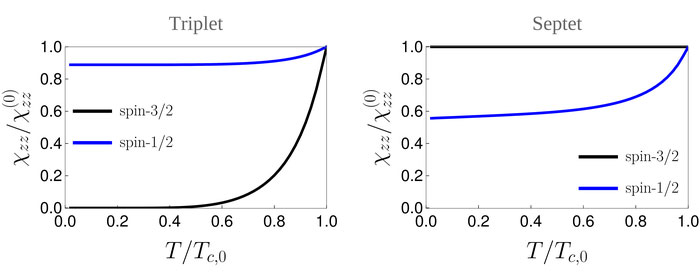PC2-4
Magnetic response of superconductors with strong spin-orbit coupling
Nov. 29 15:15-15:30
David C. Cavanagh1, Daniel F. Agterberg2, *Philip M. Brydon3
Department of Physics, University of Otago, New Zealand1
Department of Physics, University of Wisconsin-Milwaukee, USA2
Department of Physics and MacDiarmid Institute for Advanced Materials and Nanotechnology, University of Otago, New Zealand3
A key experimental probe of the pairing symmetry of unconventional superconductors is the pair-breaking effect of an external magnetic field. However, many materials of current interest have multiple bands crossing the Fermi energy and possess strong spin-orbit coupling, which renders the usual single-band theory invalid. In particular, the spin-orbit coupling in a multiband system can lead to anisotropic Zeeman-splitting and introduce gap nodes. In this work we develop a general theory for the pair-breaking effect of an arbitrary external perturbation in such a system. Our central result is that the pair-breaking can be quantified by a single measure which we dub the "field-fitness function", which incorporates the interplay spin-orbital texture of the normal-state bands with both the pairing potential and the perturbation. This parameter controls the suppression of the critical temperature and, for the case of an external magnetic field, the magnitude of the Knight shift in the superconducting state. For even-parity superconductors we find that the field-fitness function for an external magnetic field is one, implying maximal pair-breaking consistent with Anderson's theorem. For odd-parity superconductors, in contrast, the field-fitness function reveals a more complicated interplay which can yield counter-intuitive behaviour. We apply our method to the topical case of p-wave pairing in the effective j=3/2 electronic states of the Luttinger-Kohn model. Focusing on the triplet and septet states, we find that the response to a magnetic field depends sensitively on whether the j=3/2 or j=1/2 band crosses the Fermi energy. In the former case, we find that the septet state is completely insensitive to the Zeeman splitting, whereas this is maximally pair-breaking for the triplet state. Our work offers a convenient tool to understand the magnetic response of many unconventional superconductors.Ref: D. C. Cavanagh, D. F. Agterberg, and P. M. R. Brydon, arXiv:2207.01191 (2022).
Caption: Spin-susceptibility in the p-wave triplet (A1u) and septet (A2u) states of the Luttinger-Kohn model with both j=1/2 and j=3/2 Fermi surfaces.
Keywords: odd-parity superconductivity, spin-orbit coupling, magnetic field
